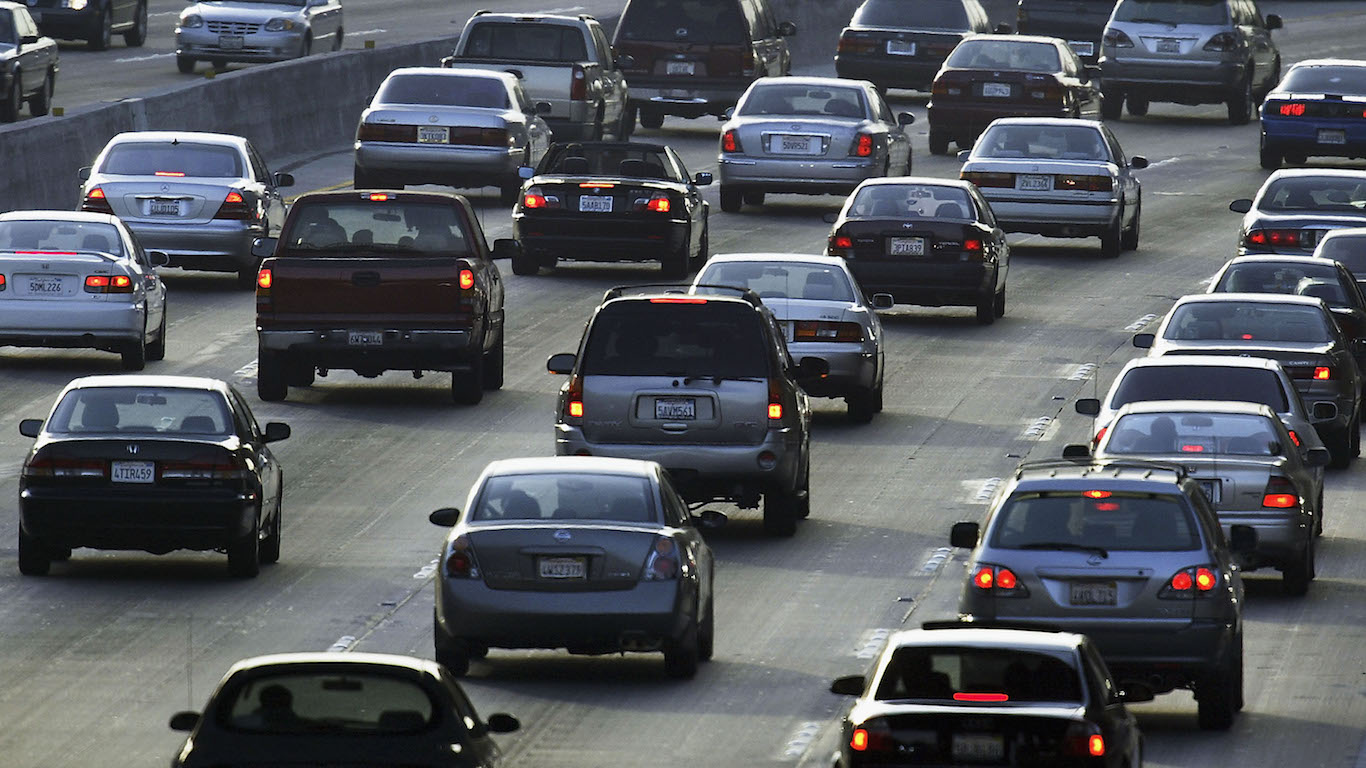Cars and Drivers
California Calls Out 'Stupidity' of Trump's Proposed Changes to Auto Standards

Published:
Last Updated:

The state of California was primed for Thursday’s announcement by the Environmental Protection Agency (EPA) and the National Highway Traffic Safety Administration (NHTSA) of a proposed rule that would amend an Obama-era regulation requiring lower emissions and higher mileage ratings by 2025. The ink was probably not dry on the EPA/NHTSA proposal when California governor Jerry Brown, Attorney General Xavier Becerra and California Air Resources Board (CARB) Chair Mary Nichols fired off a response.
In addition to easing the emissions and mileage requirements for new light vehicles, the federal proposal also calls for withdrawing a waiver granted to the state of California in 2013 allowing the state to set its own air quality standards. Those standards are considerably more restrictive than even the current federal policy.
Governor Brown said:
For Trump to now destroy a law first enacted at the request of Ronald Reagan five decades ago is a betrayal and an assault on the health of Americans everywhere. Under his reckless scheme, motorists will pay more at the pump, get worse gas mileage and breathe dirtier air. California will fight this stupidity in every conceivable way possible.
Attorney General Becerra called the proposed rule change a “brazen and unlawful attack on our nation’s Clean Air Standards” and said the state “will use every legal tool at its disposal to fight back.” Attorneys general from Connecticut, the District of Columbia, Maryland, New Jersey and Virginia also supplied statements opposing the proposed rule changes.
CARB Chair Nichols, whose staff has the unenviable task of parsing the nearly 1,000-page proposal, said her agency will indeed “figure out how the [Trump] Administration can possibly justify its absurd conclusion that weakening standards to allow dirtier, less efficient vehicles will actually save lives and money.”
The Obama administration and the automakers reached an agreement on the emissions and fuel-efficiency standards in 2012. The Trump administration and former EPA chief Scott Pruitt had targeted the previous administration’s rules practically from the day of Trump’s inauguration.
The proposed rule claims that the changes will save consumers $2,340 in average ownership costs for new vehicles and that more than 12,000 lives will be saved over the “lifetimes of all vehicles built through [model year] 2029.” Manufacturers’ regulatory cost savings are estimated at $252.6 billion and new car sales through 2029 will increase by a total of 1 million. The list of impacts also noted “no noticeable impact to net emissions of smog-forming or other ‘criteria’ or toxic air pollutants.”
Automotive News cites several reactions to the proposed changes:
Mary Barra, CEO of General Motors: “Regardless of the standards, we remain committed to a future of zero crashes, zero emissions, and zero congestion. The pathway to that vision includes continually improving fuel economy and our commitment to an all-electric future.”
Alliance of Automobile Manufacturers and the Association of Global Automakers: “With today’s release of the Administration’s proposals, it’s time for substantive negotiations to begin. We urge California and the federal government to find a common sense solution that sets continued increases in vehicle efficiency standards while also meeting the needs of America’s drivers.”
Adam Lee, chair of Maine’s Lee Auto Malls: “Mark my words; this rollback will be bad for business. … Here is my question for the President and these agencies: Why are we going to change the very standards that are giving us the most advanced, most efficient and most desirable cars, trucks and SUVs we’ve ever seen?”
The full EPA/NHTSA proposal and California’s response are available online.
Thank you for reading! Have some feedback for us?
Contact the 24/7 Wall St. editorial team.